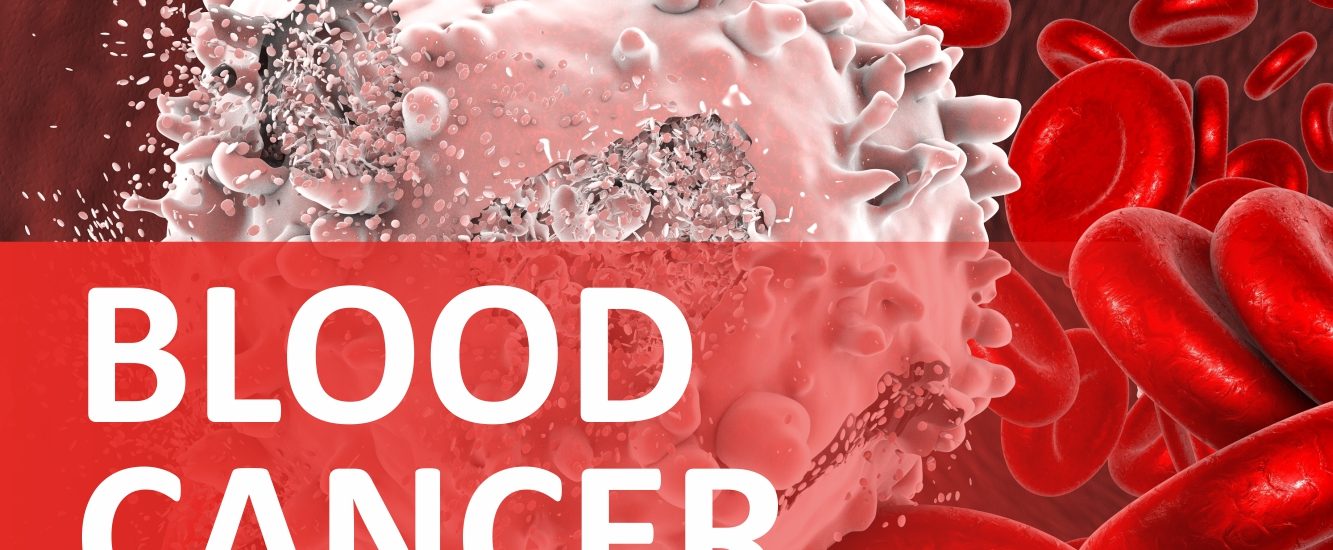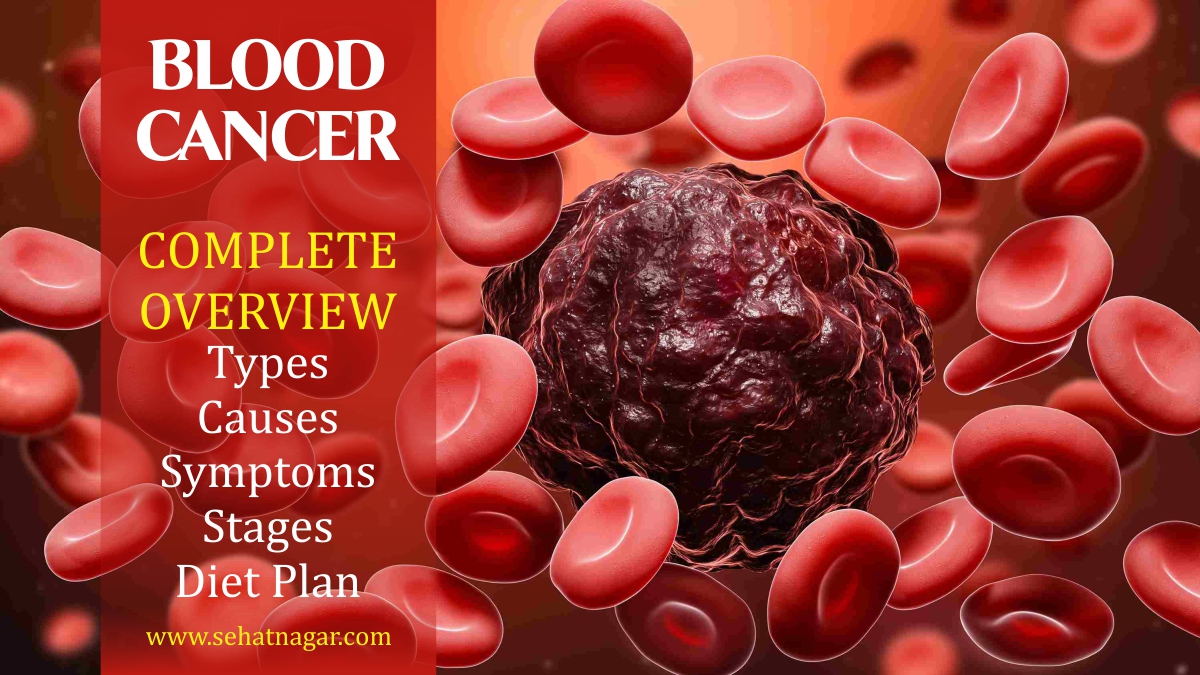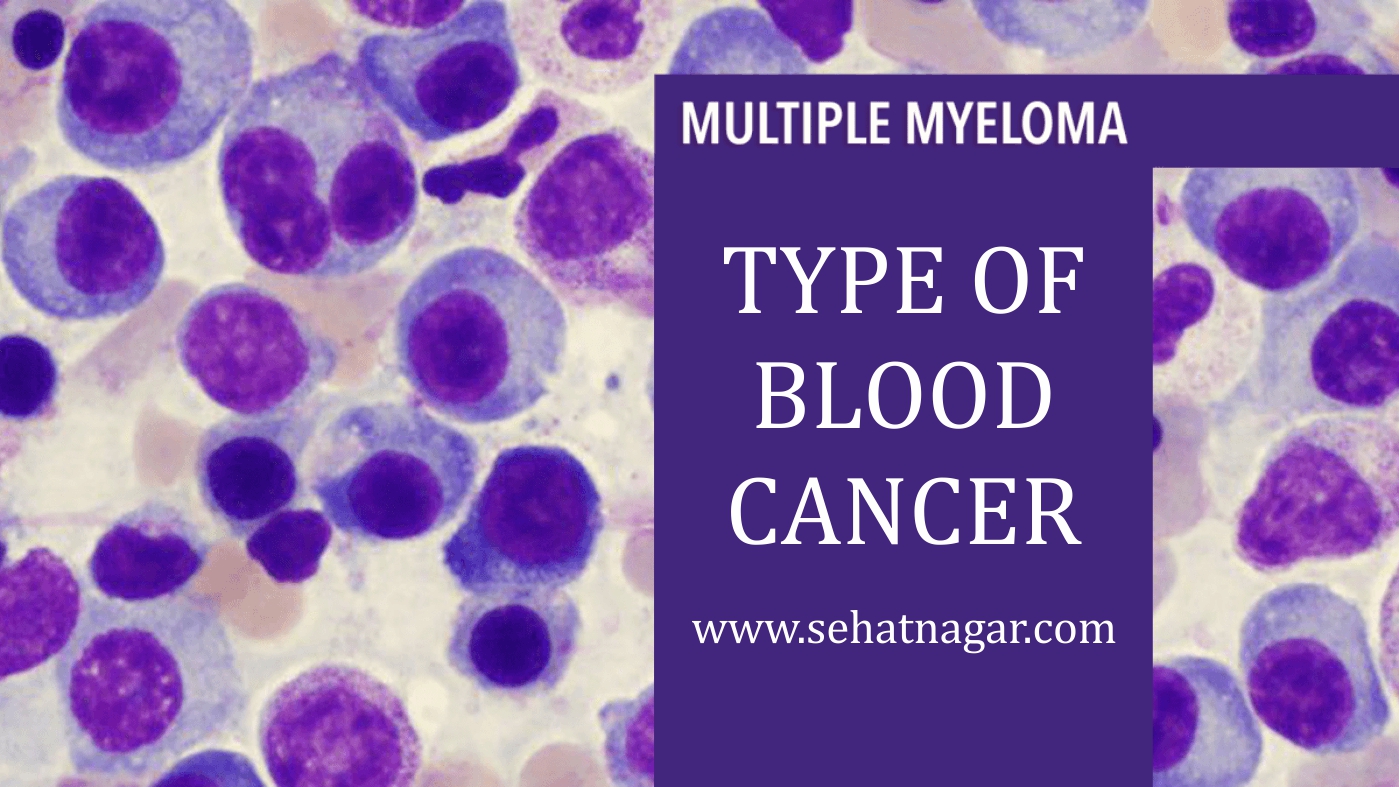Blood cancer, also known as hematologic cancer or hematological malignancy, refers to a group of cancers that affect the blood, bone marrow, or lymphatic system. This type of cancer occurs when abnormal blood cells grow uncontrollably, interfering with the normal functioning of the immune system, the production of red blood cells, white blood cells, and platelets, and ultimately disrupting the circulation of oxygen and other vital nutrients throughout the body. (Blood Caner – Definition)
Different Types of Blood Cancer
There are three main types of Blood Cancer:
Overview to Types of Blood Cancer
Leukemia:
This type of blood cancer affects the blood and bone marrow, causing the production of abnormal white blood cells. Leukemia can be either acute or chronic and can develop in different types of white blood cells, including lymphoblastic and myeloid cells. The two main types of leukemia are acute lymphoblastic leukemia (ALL) and acute myeloid leukemia (AML), which are more common in children and older adults, respectively.
- Acute lymphoblastic leukemia (ALL) is a type of blood cancer that affects the white blood cells, specifically the lymphocytes, which are a type of immune cell. In ALL, abnormal and immature lymphocytes, called lymphoblast’s, grow rapidly and uncontrollably in the bone marrow and other organs, crowding out healthy blood cells and interfering with the production of normal blood cells. ALL is the most common type of childhood leukemia, but it can also affect adults. The symptoms of ALL may include fatigue, pale skin, frequent infections, fever, bone pain, easy bruising or bleeding, and swollen lymph nodes. The cause of ALL is not yet known, but certain factors, such as genetic mutations, exposure to radiation or chemicals, and immune system deficiencies, may increase the risk of developing the disease.
- Acute myeloid leukemia (AML) is a type of blood cancer that affects the myeloid cells, which are responsible for producing red blood cells, white blood cells, and platelets. In AML, abnormal myeloid cells grow rapidly and uncontrollably in the bone marrow, interfering with the production of normal blood cells and crowding out healthy cells. AML is more common in older adults, but it can affect people of any age. The symptoms of AML may include fatigue, pale skin, frequent infections, fever, bone pain, easy bruising or bleeding, and swollen lymph nodes. The cause of AML is not yet known, but certain factors, such as exposure to radiation or chemicals, genetic mutations, and certain medical conditions, may increase the risk of developing the disease.
Lymphoma:
Lymphoma is a type of blood cancer that affects the lymphatic system, which is responsible for fighting infections and filtering toxins from the body. This kind of blood cancer, Lymphoma develops when lymphocytes, a type of white blood cell, grow abnormally and form tumors in lymph nodes, spleen, and other lymphatic tissues. The two main types of lymphoma are Hodgkin’s lymphoma and non-Hodgkin’s lymphoma, which have different subtypes and prognoses.
- Hodgkin’s lymphoma (HL), also known as Hodgkin disease, is a type of blood cancer that affects the lymphatic system. In HL, abnormal B lymphocytes, a type of white blood cell, grow uncontrollably and form tumors in lymph nodes and other lymphatic tissues. These tumors are typically characterize by the presence of Reed-Sternberg cells, which are large and abnormal B lymphocytes. HL is more common in young adults, but it can affect people of any age. The symptoms of HL may include swollen lymph nodes, fatigue, fever, night sweats, and weight loss. The cause of HL is not yet known, but certain factors, such as a weakened immune system, infections, and exposure to certain chemicals, may increase the risk of developing the disease.
- Non-Hodgkin’s lymphoma (NHL) is a type of blood cancer that affects the lymphatic system, which is a part of the immune system that helps to protect the body against infection and disease. In NHL, abnormal B or T lymphocytes, a type of white blood cell, grow uncontrollably and form tumors in lymph nodes and other lymphatic tissues.
NHL is more common in older adults, but it can affect people of any age. The symptoms of NHL may include swollen lymph nodes, fever, night sweats, weight loss, fatigue, and other non-specific symptoms, depending on the location and stage of the disease. The cause of NHL is not yet known, but certain factors, such as a weakened immune system, infections, exposure to certain chemicals, and genetic mutations, may increase the risk of developing the disease.
Multiple Myeloma:
- Multiple myeloma is a type of blood cancer that affects the plasma cells, which are responsible for producing antibodies. Multiple myeloma develops when abnormal plasma cells grow uncontrollably and form tumors in bone marrow and other tissues, causing bone damage, anemia, and immune system suppression. Multiple myeloma is more common in older adults and can be difficult to diagnose and treat.
Symptoms
Blood cancer symptoms vary by type and subtype. Some blood cancers may have no immediate symptoms.
Common signs and symptoms of blood cancer include:
- Fever.
- Fatigue.
- Unexplained weight loss.
- Easy bleeding or bruising.
- Bone, joint, or abdominal pain.
- Swelling of lymph nodes, liver, or spleen.
- Weakness or numbness.
- Unexplained itchiness or rashes.
- Frequent infections.
- Pale complexion.
- Feeling of fullness.
- Cough or chest pain.
Causes
Blood cancer is thought to be the consequence of certain genetic and environmental changes that permit healthy blood cells to mutate and proliferate. With leukemia, for instance, the growth of abnormal white blood cells impedes normal cell development. While it’s not clear why one person develops a blood cancer and someone else does not, there are certain risk factors that can make people more susceptible.
Leukemia risk factors:
- Exposure to cancer-causing chemicals, such as formaldehyde or benzene.
- Smoking.
- Chemotherapy treatment.
- Radiation exposure.
- Myelodysplastic syndrome, a disorder that impairs normal blood cell production.
- Having a first-degree relative with the disease.
- Having Down syndrome
Lymphoma risk factors:
- Older age.
- Having a suppressed immune system due to an autoimmune disease or immunosuppressant treatment.
- Exposure to infections, such as Epstein-Bar, HIV/AIDS, Hepatitis C, and Helicobacter pylori.
- Occupational or environmental exposures to certain chemicals, including pesticides, herbicides, and benzene.
- A genetic predisposition, for example, having a parent, child, or sibling with lymphoma.
- Radiation exposure.
- Being overweight or obese.
- Having textured breast implants.
Diagnosis
Sometimes symptoms launch the diagnostic process; other times abnormalities show up during routine blood work. Your doctor may perform a physical exam to check swelling of your lymph nodes, liver, or spleen, or signs of bleeding or bruising. An X-ray or other imaging tests may be performed.
Blood tests, such as a CBC (complete blood count), can determine levels of white blood cells, red blood cells, and platelets. An elevated white blood cell count may be a sign of leukemia. A bone marrow biopsy may be ordered to look for cancer cells. Blood and tissue samples may be tested to determine the type of leukemia.
Lymphomas are generally diagnose via biopsy, which involves taking a sample of tissue from an enlarged lymph node to examine under a microscope. Lab and imaging tests can help determine the cancer’s location and stage.
A definitive diagnosis of myeloma may require blood and urine testing, imaging, and other tests.
Treatment
Blood cancer treatment depends on many factors. The type of cancer someone has, its location and features, its progression, and a person’s overall health are among the variables that are considered. Possible treatment options include:
- Active surveillance/watchful waiting (or monitoring the disease for any changes).
- Chemotherapy.
- Stem cell (bone marrow) transplantation.
- Radiation therapy.
- Targeted therapies.
- Immunotherapy, such as CAR T-cell therapy or monoclonal antibody (rituximab) treatment.
- Surgery (to remove affected lymph nodes or the spleen, for example).
- Blood transfusion.
Participating in a clinical trial may be an option for some blood cancer patients. Palliative care may be given to ease pain and other symptoms.
Prevention
There’s no surefire way to prevent blood cancer. The risk of cancer may be out of your control. Most cases of chronic myeloid leukemia, for example, have no known risk factors. Likewise, there are few known risk factors for chronic lymphocytic leukemia. However, your risk of some other types of blood cancer may be reduced by adjusting your lifestyle and avoiding certain environmental factors.
- Avoid unnecessary exposure to radiation.
- Avoid cancer-causing chemicals.
- Don’t use tobacco products.
- Avoid risky health behaviors that can increase that chances of AIDS or hepatitis C.
- Stay physically active.
- Eat a healthy diet.
Related




